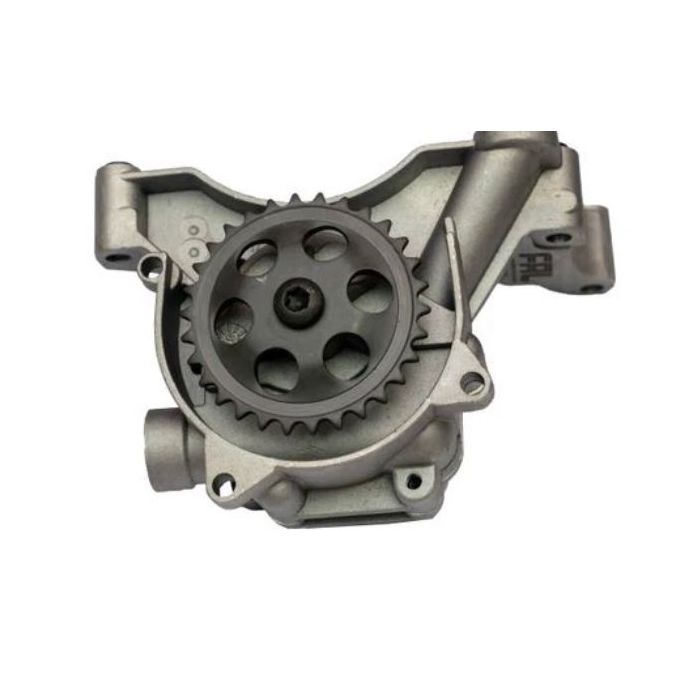Just How a Clp Engine Can Boost Performance in Various Industries
The introduction of CLP engines marks a considerable change in operational effectiveness throughout various fields, driven by their ability to maximize fuel usage and minimize downtime. Industries such as production and logistics stand to gain substantially from their robust layout and consistent power outcome, which promise to improve procedures and enhance efficiency. As companies increasingly prioritize sustainability along with efficiency, the function of CLP engines comes to be even much more important. What remains to be seen is exactly how these innovations will shape the future landscape of industrial procedures and their influence on broader economic patterns (clp engine).
Overview of CLP Engines
CLP engines, or Continual Fluid Propellant engines, represent a significant development in propulsion technology, specifically for room applications. These engines use a continuous feed system that enables the continual expulsion of propellant, causing improved efficiency and efficiency contrasted to conventional solid or hybrid propulsion systems. By keeping a continuous flow of liquid propellant, CLP engines can attain extra exact thrust control, which is essential for maneuvering spacecraft in various goal circumstances.
The design of CLP engines incorporates sophisticated materials and cutting-edge fuel monitoring systems. clp engine. This leads to reduced weight and raised reliability, crucial aspects for long-duration space goals. The continual operation minimizes the danger of combustion instability, a typical obstacle in traditional rocket engines.

Benefits in Production
The production of Continual Fluid Propellant (CLP) engines provides a number of noteworthy advantages that enhance both performance and cost-effectiveness. Among the main benefits is the streamlined manufacturing procedure, which minimizes the complexity connected with traditional propulsion systems. By utilizing fluid propellant, makers can accomplish higher precision in engine efficiency, bring about enhanced energy result and minimized waste.
Furthermore, CLP engines assist in a higher level of modularity, permitting much easier combination into various production lines. This flexibility can considerably reduce lead times and improve general operational adaptability. Using CLP modern technology likewise tends to decrease the demand for extensive upkeep due to less moving parts, which translates right into minimized downtime and operational costs.

Applications in Logistics
Leveraging Continual Fluid Propellant (CLP) engines in logistics uses substantial benefits in functional performance and integrity. These engines give a durable remedy for numerous transport demands, making it possible for the smooth motion of products across vast distances. The inherent layout of CLP engines enables regular power outcome, which equates into smoother and more foreseeable transport routines.
One of the key applications of CLP engines in logistics remains in sturdy products transport, where they can drive both ground and aerial vehicles. Their capacity to keep high efficiency under varying load conditions makes certain that shipment timelines resource are satisfied, thereby boosting client fulfillment. Additionally, CLP engines can be incorporated right into automated logistics systems, helping with real-time tracking and maximizing path planning.
Additionally, the longevity of CLP engines decreases maintenance downtime, permitting logistics business to maximize their functional abilities. This is especially helpful in warehousing operations, where performance in taking care of and transferring items is important. As logistics remains to advance, the combination of CLP engines stands for a forward-thinking method that not just improves efficiency but additionally supports the market's growing demands for integrity and speed.
Influence on Energy Effectiveness
How do Constant Fluid Propellant (CLP) engines enhance energy performance in transportation? CLP engines use a regular flow of fluid gas, optimizing combustion procedures and maintaining a steady drive output. This style decreases energy losses connected with typical combustion engines, where fuel distribution can differ and lead to ineffectiveness.
The continual operation of CLP engines enables a much more reliable thermal cycle, resulting in Read Full Report higher particular impulse contrasted to standard engines. clp engine. This translates to decreased fuel usage for the very same quantity of work done, substantially decreasing functional costs across different transport fields, consisting of aviation and maritime industries
Furthermore, the capability of CLP engines to preserve ideal efficiency under differing tons problems minimizes the demand for constant velocity and slowdown, better boosting gas efficiency. Improved energy efficiency not only adds to set you back financial savings yet also results in decrease greenhouse gas exhausts, straightening with global sustainability goals.
Future Trends and Innovations
Emerging advancements in Constant Liquid Propellant (CLP) engine innovation guarantee to revolutionize the landscape of transportation performance and sustainability. As sectors pivot towards greener options, CLP engines stand at the forefront, integrating innovative products and style approaches that enhance performance while minimizing ecological influence.
Among the most promising patterns is the fostering of hybrid systems that combine CLP engines with renewable resource resources. This synergy can maximize gas usage and reduce exhausts, lining up with global sustainability objectives. In addition, improvements in computational fluid dynamics (CFD) are facilitating the style of more aerodynamically reliable engines, bring about lowered drag and boosted fuel efficiency.
Furthermore, the growth of clever tracking systems is established to improve operational performances. These systems take advantage of data analytics and IoT innovation to optimize engine efficiency in real-time, making certain that the engines run within their most effective specifications.
As study continues to discover alternative propellant formulas-- such as biofuels and artificial fuels-- the future of CLP engines looks appealing. By utilizing these developments, sectors can not only enhance their performance but likewise add read this dramatically to a cleaner, much more sustainable future in transport.
Conclusion
In conclusion, CLP engines represent a considerable advancement in effectiveness throughout multiple industries. The combination of innovative products and fewer moving components minimizes maintenance needs, while placement with sustainability objectives placements CLP engines as a crucial technology for the future.